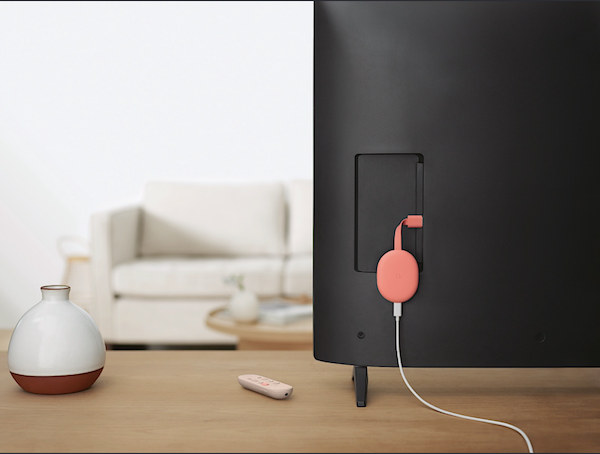The Death of the Dongle
Want proof? Look at what the three biggest dongle makers — Amazon, Google and Roku — are up to these days.

We are gathered here today to celebrate this thing called dongles — a stick or puck-like connected device that plugs into an HDMI port of a TV — which were useful in the early days of streaming, but have long since outlived their usefulness.
Want proof? Look at what the three biggest dongle makers — Amazon, Google and Roku are up to these days. They’re getting further into the smart TV business, or at least making sure their operating system is powering them. Or both.

To understand why dongles are fading off into the sunset, it’s useful to take a quick look at why they took off in the first place.
In the early days of streaming, TV manufacturers had limited experience with software, especially any sort of on-screen streaming interface.
Pre-cable, there was no interface. You turned on the TV and whatever channel it was tuned to started playing.
Post-cable, the interface came courtesy of the MVPD’s set-top box, which was not an “interface” but rather an on-screen grid that allowed the viewer to use their remote to flip through a rapidly growing number of channels.
When streaming came along, TV manufacturers were not ready for all the changes that were about to take place. They didn’t have software teams who could create and maintain easy streaming experiences.
The smarter way to stay on top of broadcasting and cable industry. Sign up below
Thus, it fell to the dongle manufacturers to bridge the gap and create a way to view streaming on the TV that did not involve hooking a laptop up to an HDMI port. (If in fact your TV even had an HDMI port.)
Dongles were easily upgraded and thus could quickly include all the latest apps and all the latest updates to those apps, both of which seemed to pop up monthly. What’s more, if a dongle broke or became hopelessly out of date, another $29 (or more) bought a brand new one, where you’d have access to hundreds of apps via a simple but relatively user-friendly TV interface.
On the other hand, they were a Trojan horse of sorts, which allowed companies that were not TV manufacturers to take over the TV interface without having to invest in the cost of actually building a TV set.
That’s all changed now.
Smart TV manufacturers recognized the power of the interface and set to work creating the best ones possible. While the dongle manufacturers largely looked for ways to license their interfaces to companies that already made TVs: the OEMs. That is why, in 2022, all smart TVs from the major OEMs have interfaces, content and functionality that are equal to or better than dongles.
What’s more, the “Big Three” — LG, Samsung and Vizio — all have their own FAST services, their own ad sales products and their own ACR-based measurement systems.
Those FAST services are the heart of the smart TV’s interface and provide access to thousands of hours of free programming the moment the viewer turns on their TV for the very first time. They also give programmers the ability to promote their shows to millions of viewers, a critical piece of functionality during the current content glut.
But most of all, smart TVs now have all of the major multi-billion-dollar streaming apps along with dozens, if not hundreds of smaller ones.
They also have interfaces that can be updated regularly and smaller, easy-to-navigate remote controls that have eliminated all those baffling “what does this one do?” buttons, along with the numeric keypad.
So what does the death of dongles mean for viewers, programmers and advertisers?
For viewers, especially those with newer TVs, it means that right out of the box, they have access to an interface that is designed for the way people watch TV now, with all of the major apps installed along with thousands of hours of free programming. It’s especially useful for viewers who are not overly tech savvy, as the TV interface will walk them through everything from setting up their apps to connecting the TV to the internet.
Plus there’s no need to use up a scarce HDMI port and USB port to attach the dongle.
Mostly though, consumers are now getting a state-of-the-art TV, with unrivaled picture quality and those TVs finally have an interface to match.
Advertisers get an equally good deal. They are able to reach audiences they’re missing on linear as well as the ability to work with companies that own both the hardware and the software on the connected TV set.
That is key, as the ACR data collected from smart TVs measures both streaming and linear, and can help correct for problems like video ad overfrequency when viewing happens on the TV’s own interface rather than on the dongle.
The dongle was never meant to be anything more than a quick-fix solution to a problem that cropped up when streaming television took off faster than anyone expected. Now that the major OEMs have caught up and have rolled out premium interfaces on their latest models, there’s no reason for dongles to exist anymore.
So here’s to dongles. They had a good run and helped to jump start an industry, but it’s time to allow them to go the way of the Walkman and the 8-track. Now, has anyone seen my Newton? ▪️
Monica Longoria is head of product marketing at LG Ads Solutions.
